The Pyohunwon 표훈원 (表勳院)
The Pyohunwon was the Office of Royal Decrees and was an administrative agency established in July 1899 by Imperial Decree #30. It existed until the Japan-Korea Annexation Treaty of 1910 which ended the Korean Empire. It was responsible for affairs related to honors, decorations, commendations, pensions, badges, awards and also took charge of matters related to Koreans receiving or wearing foreign medals. It also maintained the medal rolls for Korean Orders but, for some reason, it did maintain any medal roll for the Commemorative Medals. The Pyohunwon was an independent office, so that no one could force an award. References state that even the monarch had to go through channels, and according to some sources, his request could be downgraded or refused. The Chungcheongbu 충정부 or Gigongguk 기공국, which was previously subordinate to the State Council 議政府, became independent in 1899 and acquired the name of Pyohunwon. The Jejangguk 제장국 was the department within the Pyohunwon that produced the medals of the Korean Empire, but, that does not mean that they manufactured the awards. However, according to Imperial Decree #30, Article 9 “In order to manufacture medals, the Royal Academy of Military Science and Technology shall establish a separate bureau called the Manufacturing Bureau and designate it as the Third Class Bureau 三等局”.
The Commemorative Medals 記念章 (기념장)
Imperial 50th Birthday Commemorative Medal 高宗 聖壽 50周年 記念章 (고종 성수 50주년 기념장)
This medal commemorates the 50th birthday of Emperor Kwangmu and was issued in Sept. 7, 1901. The obverse shows the Emperor’s Crown. The reverse has the inscription ‘대한제국 대황제폐하 성수 오십년 칭경기념 은장 광무 오년 구월 칠일’ Great Korean Empire, Great Korean Emperor, Imperial Age 50 Years Felicitations, Commemorative Silver Medal, Kwangmu 5, 9th Month, 7th Day. According to Korean sources, it only comes in silver. This is by far, the hardest Korean Empire Commemorative Medal to acquire.

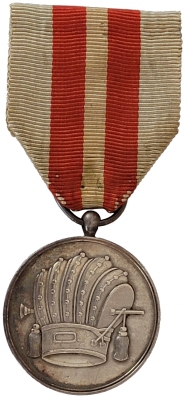
Forty Year Reign Commemorative Medal 高宗 望六旬·登極 40周年 記念章 (고종 망육순·등극 40주년 기념장)
The Forty-Year Reign Commemorative Medal was issued in silver and bronze and is dated Kwangmu 6th year, 10th month, 18th day (October 18, 1902). The obverse shows the Injeongjieon 仁政殿 (인정전 Hall of Benevolent Administration) in Changdeok Palace 昌德宮 (창덕궁), Seoul. It is the main hall of the Palace, where the emperor held official national events, such as receiving foreign envoys and receiving condolences from his subjects. It was designated as Korea’s National Treasure No. 225 on January 8, 1985. The reverse of the bronze medal has the inscription 대한제국 대황제폐하 성수 망 육순 어극 사십년 급임기사합삼경 기념동장 광무 육년 삼월 십팔일 ‘Imperial Korea, His Majesty the Emperor, In Commemoration of the Forty-Year Reign, And to Pray for Sixty Additional Years of His Majesty’s Life, Commemorative Bronze Medal, Kwangmu 5, 10th Month, 18th Day.’ The silver version has the same inscription, but substitutes the word 은 “Silver” instead of 동 “Bronze”.
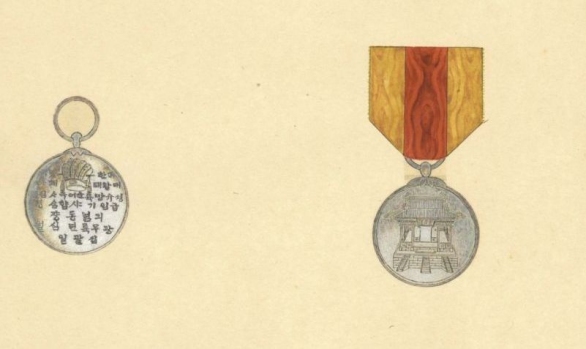
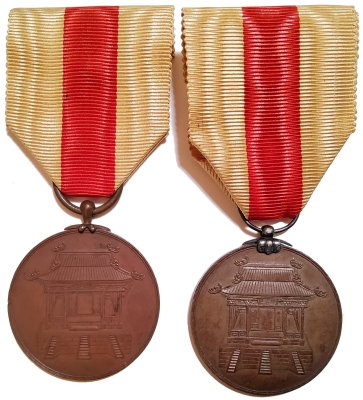
Crown Prince Wedding Commemorative Medal 皇太子 嘉禮 記念章 (황태자 가례 기념장)
This medal commemorates Prince Sunjong’s (later Emperor Yung Hi) wedding on January 24, 1907. An ordinance was issued on Jan. 1, 1907, states: “At this wedding ceremony of the Crown Prince, a commemorative medal will be presented in silver and bronze. Divide it into two types and made at the Pyohunwon (Office of Royal Decrees 表勳院) and given to the attendees on the day.” The obverse has two doves facing each other. The reverse has the inscription 대한제국 황태자 전하 가례식 광무 십일년 일월 이십사일 ‘Great Korean Empire, His Highness the Crown Prince, Marriage Ceremony, Commemorative Medal, Kwang Mu 11, 1st Month 24th Day.’ It was produced in both silver and bronze.
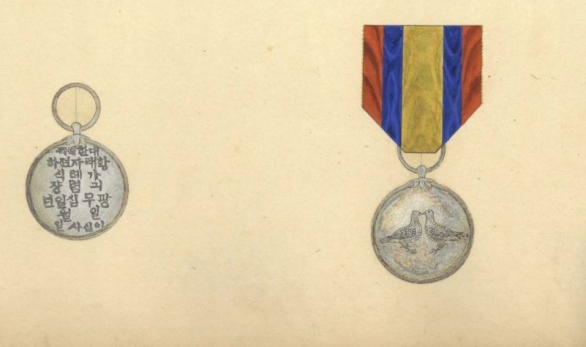
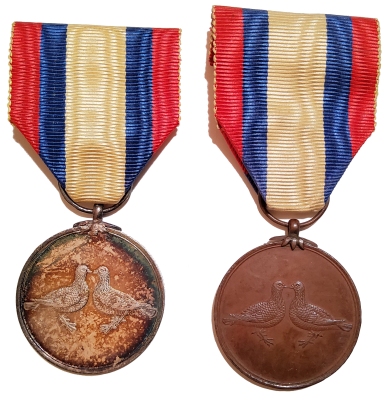
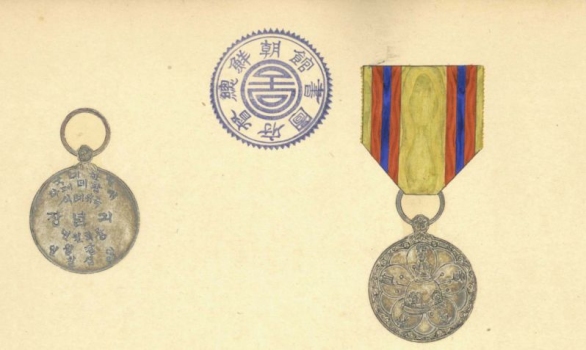
Enthronement Commemorative Medal 純宗 皇帝 卽位 記念章 (순종 황제 즉위 기념장)
This medal commemorates Emperor Yung Hui’s enthronement on August 27, 1907. The obverse has the Korean Imperial helmet (Pickelhaube) on a plum blossom, and an outer border of Taeguk symbols and scroll work. The reverse has the inscription 대한제국 대황제폐하 즉위제식 기념장 융희 원년 팔월 이십칠일 ‘Great Korean Empire, Great Korean Emperor, Enthronement Ceremony, Commemorative Medal, Yung hi 1, August 27.’ These are generally found in silver or bronze, however at least one example has been found in gold.1 Because of this example in gold, it is reasonable to assume that, all the standard 5 commemorative medals were issued in gold for members of the immediate royal family. All cases have the inscription 卽位記念章, “Medal of Honor”, done in seal script. The Annals of King Sunjong, states: “In a response to a request from the Cabinet 內閣 and the Ministry of Government Affairs 度支部, 4,836 won was allocated from the reserve fund for the overall cost of producing the Enthronement Commemorative Medal”.2 This is by far, the easiest Korean Empire Commemorative Medal to acquire.
For a film on the design characteristics of this medal, see the short YouTube video “The memorial of the Korean Empire’s helmet“. Produced by the National Palace Museum of Korea 국립고궁박물관, in Korean with English subtitles.
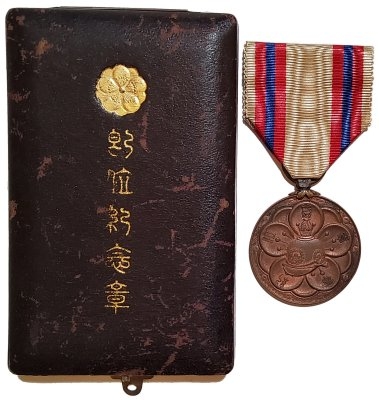
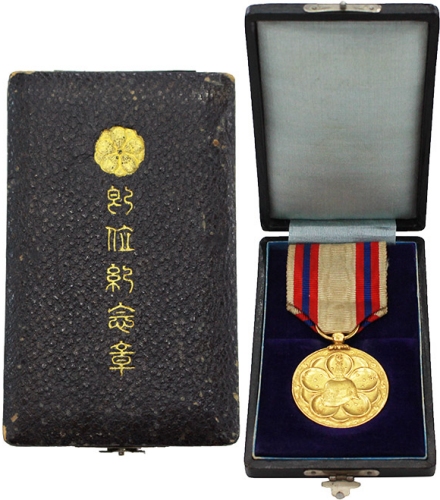
The picture source: www.geochangsa.com
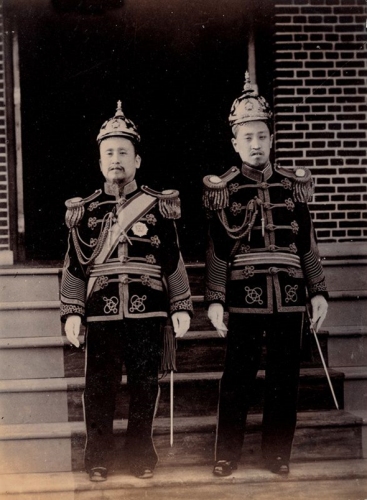
According to the Korean Cultural Heritage Administration 문화재청, there are no surviving Korean Dynasty pickelhaubes.
Imperial Tour Commemorative Medal 純宗 南西巡幸 記念章 (순종 남서순행 기념장)
The medal was established in 1909 by Imperial Decree #63 on June 1, 1909, to commemorate two Imperial Tours. It is 33 mm in diameter, made of silver, and has the Emperors’ personal flag with Plum blossom on the obverse. The Emperor was from the Yi family, and the word Yi translates as plum. The reverse inscription translates as “Great Korean Empire / Great Korean Emperor / Trip to the South and West Commemorative Medal / Yung Hi 3rd year (국뎨한대 / 하폐뎨황대 / 장념긔?슌셔남 / 년삼희륭)”. The question mark indicates a Korean character that is no longer used, and cannot be printed. Korean internet sources render the inscription as: 대한제국 대황제폐하 남서순행 기념장 융희 삼년. The light red ribbon is 37 mm wide, watered, and has two 7 mm pale yellow edge stripes. According to Korean sources, it only comes in silver.
Because of the establishment of the Japanese Protectorate in 1905, there were widespread disturbances throughout the Korean Peninsula. The Japanese did not have the police and military forces in place, that would be necessary to handle any major civil disturbance. In 1907, imperial edicts were issued on July 19th, Sept. 18th and on Dec. 13th, asking the populace to stop all forms of civil disobedience. In a Sept. 1, 1908 edict, amnesty was offered to any insurgent who surrendered before the end of October. To counteract rumors that the Emperor Sunjong was being held captive by the Japanese, an Imperial Rescript was issued on January 4, 1909, to announce a nationwide imperial tour. Two tours were actually conducted in January and February, to the South and West of the country. The Imperial Rescript stated that the Emperor wanted to personally inspect the conditions prevailing among the people; to acquire intimate knowledge of the situation, and at the same time to announce the new era which awaits the nation under competent guidance from Japan toward reforms and progress. The first tour to the South of the country took 13 days, while the second tour to the (North) West took 8 days.
The Japanese and their Korean collaborators made a gigantic public relations event out of the tours. There were parades, fireworks, and the newly created Imperial marching band performed the recently composed national anthem, Aegukka 애국가, at each stop. Gifts were bestowed on cities, towns, schools. Awards were handed out to filial sons and virtuous widows. Tours were conducted at the local historical monuments through which the Emperor and the Resident General passed. All the dignitaries appeared in formal Western ceremonial/court attire 문관대례복 (文官大禮服) as a show of modernity. The Japanese and Korean flags were prominently displayed. Resident General Ito Hirobumi made 8 speeches, informing the crowds that it was his duty to guide the Korean Emperor and his government toward an enlightened administration, for the preservation of peace in the East and thus ultimately for the peace of the world at large. The Southern tour went mostly as planned, but the tour to the North-West did not fare so well. The Japanese authorities got their first taste of Korean recalcitrance in Kaesong. Local police forces had been instructed to mobilize schoolchildren and to have them wave the national flags of Korea and Japan at the welcoming parades and at school visits. The faculty of a Christian mission school refused to instruct its students to waive the Japanese flag. The brouhaha over the flag issue spread, emboldening Korean nationalists. Almost overnight, throughout the northwest region, displayed Japanese Hinomaru (日の丸, ‘Circle of the Sun’) flags were seized, torn apart, stomped upon, or burned. 3
There are references which state that the tours were in the South and North. In actuality, the tours were to the South and North-West.
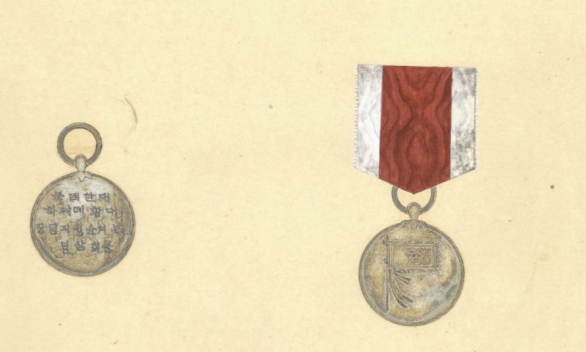
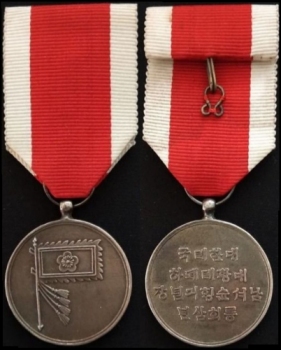
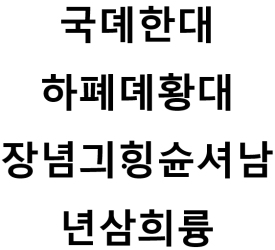
The dot in the 4th Character in the 3rd line is obsolete.
For a film showing pictures of the 1909 tour, see 순종황제의 서북순행 Northwest Inspection Tour of the Emperor

Medal of Merit 賞牌 記念章 (상패 기념장)
Not shown in the Peterson Monograph, this medal is called a Korean Empire Commemorative Medal by Korean collectors. I have no information on this medal. The inscription on the reverse 賞牌 (상패) is commonly translated as “Plaque” or “Prize Medal”, but is more accurately translated as “Merit Medal” or “Medal of Merit”. It is listed in the book “Korean Empire Era, Decoration System” 대한제국시대 훈장제도.4 “Link to blog post and picture source”5
There are some indications that these medals were awarded during Emperor Sunjong’s Imperial Tours of 1909, but I have not been able to confirm this. It should be pointed out that the tours were public relations events to tout the benefits of Japanese rule over the Korean peninsula. If the medal had been issued as part of the tour, then it should have crossed Korean and Japanese flags.

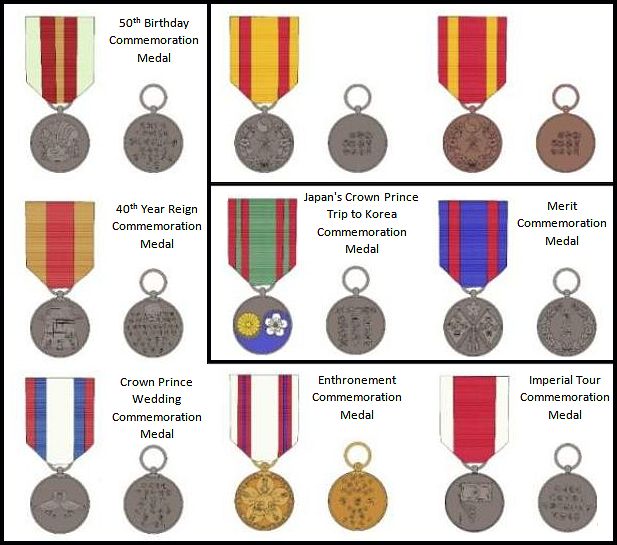
For another Korean Commemorative Medal please refer to Medals of The 1907 Japanese Imperial Tour. Make no mistake about this last entry above and the 1907 Japanese Imperial Tour Medal. In searching the Korean Internet, I have run into several blogs which talk about the “other two” Commemorative Medals. Korean medal collectors differentiate them by the text used in the inscription. The standard five commemorative medals utilize Korean text while the “other two” are in traditional Chinese characters, hence the term.
To the right is a picture that I got off the Korean internet. I have modified it and present it here because it not only shows the standard 5 commemorative medals, the “other two” medals, but also purports two show two more medals that are completely unknown to me.6 Unfortunately, I have not been able to get better pictures of these last two medals and consequently cannot give a translation of the text. I also found one blog source which states that these last two medals were never produced. They appear to be identical, with one in silver and the other in bronze. Probably the most important feature of this picture is the identification of the ribbon colors.
Footnotes:
- Lot #426, Hwadong Auction #20, 9-17-2011. Price realized was ₩23,000,000 (Approx. $22,220 U.S. at that time) + Buyer’s Premium. Weight 34.4g, Size 33.6×52.3×2.7 mm, condition XF.
- Annals of King Sunjong, Volume 2, April 20, 1908.
- For a more exhaustive treatment of the tours, see “Politics and Pageantry in Protectorate Korea (1905-10): The Imperial Progresses of Sunjong” by Christine Kim (2009).
- Yi Kang-chil 이강칠 (李康七), op. cit., p. 81
- The pictures used here are from a 2013 Korean blog post. Unfortunately, because I do not have a Korean Citizen Identification Card, I cannot communicate with the author. If you can communicate with the author, please have him get in touch with me.
- I modified the picture to make it more understandable to non-Koreans. Modifications were limited to reorganizing and moving the locations of the medals on the page, adding text and creating borders.
